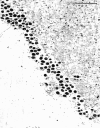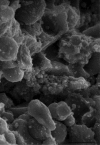Staphylococcus aureus biofilms: properties, regulation, and roles in human disease
- PMID: 21921685
- PMCID: PMC3322633
- DOI: 10.4161/viru.2.5.17724
Staphylococcus aureus biofilms: properties, regulation, and roles in human disease
Abstract
Increasing attention has been focused on understanding bacterial biofilms and this growth modality's relation to human disease. In this review we explore the genetic regulation and molecular components involved in biofilm formation and maturation in the context of the Gram-positive cocci, Staphylococcus aureus. In addition, we discuss diseases and host immune responses, along with current therapies associated with S. aureus biofilm infections and prevention strategies.
Figures







References
-
- Kristian SA, Golda T, Ferracin F, Cramton SE, Neumeister B, Peschel A, et al. The ability of biofilm formation does not influence virulence of Staphylococcus aureus and host response in a mouse tissue cage infection model. Microb Pathog. 2004;36:237–245. doi: 10.1016/j.mic-path.2003.12.004. - DOI - PubMed
-
- Brady RA, Leid JG, Kofonow J, Costerton JW, Shirtliff ME. Immunoglobulins to surface-associated biofilm immunogens provide a novel means of visualization of methicillin-resistant Staphylococcus aureus biofilms. Appl Environ Microbiol. 2007;73:6612–6619. doi: 10.1128/AEM.00855-07. - DOI - PMC - PubMed
Publication types
MeSH terms
Grants and funding
LinkOut - more resources
Full Text Sources
Other Literature Sources
Medical
